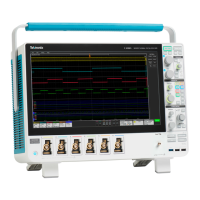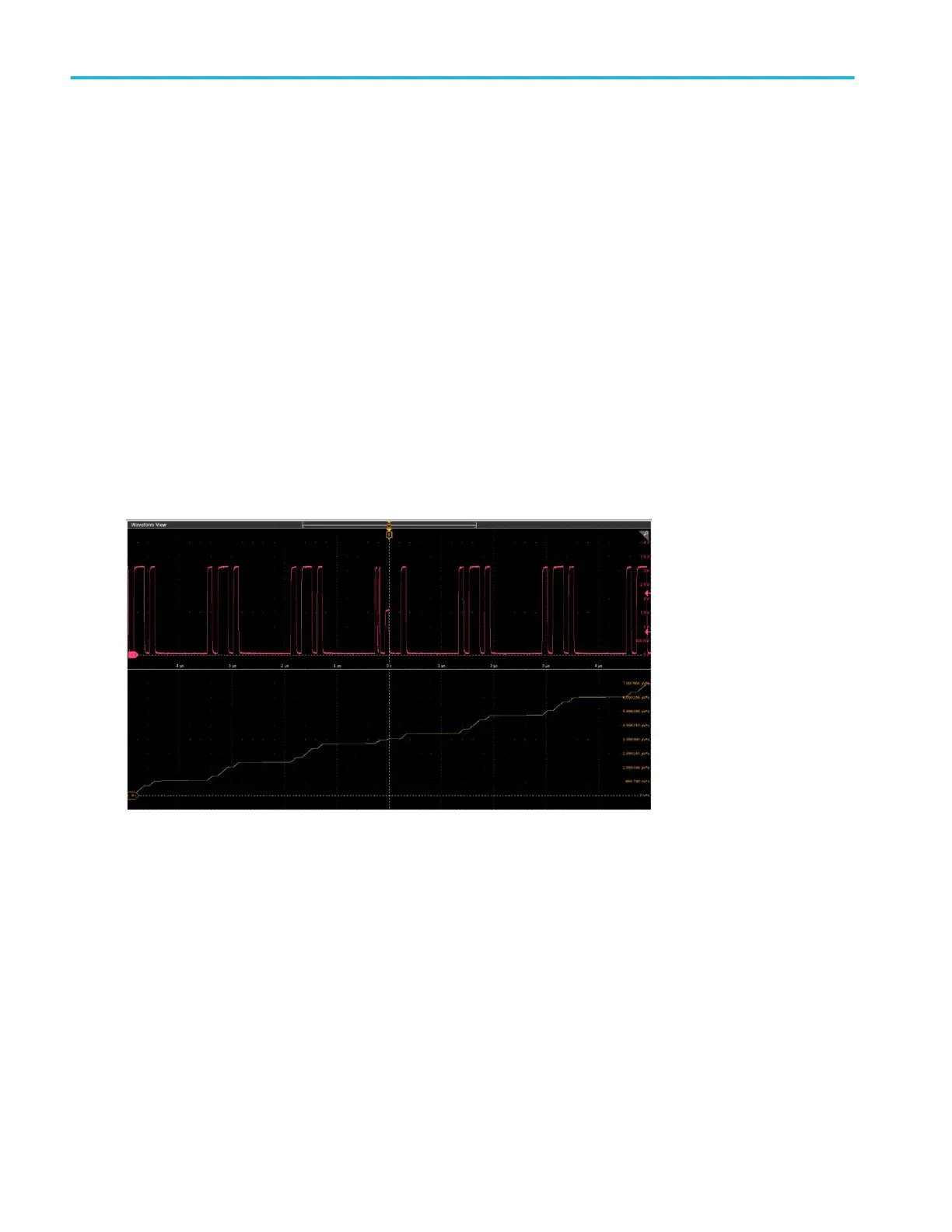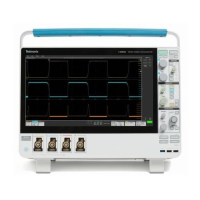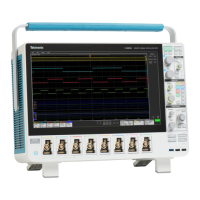Missing or out-of-range samples
If some samples in the waveform are missing or off-scale, the measurements will interpolate between known samples to make an
appropriate guess as to the sample value. Missing samples at the ends of the measurement record will be assumed to have the
value of the nearest known sample. The interpolation method can be changed in User Preferences.
When samples are out of range, the measurement will give a warning to that effect (for example, CLIPPING) if the measurement
could change by extending the measurement range slightly. The algorithms assume the samples recover from an overdrive
condition instantaneously.
For example, if the Mid reference level is set directly, then Mid would not change even if samples were out of range. However, if
Mid was chosen using the % choice from the Set Levels in % selection of the Measure menu Reference Levels tab, then Mid
could give a CLIPPING warning.
Math waveforms
Once you have acquired waveforms or taken measurements on waveforms, the instrument can mathematically combine them to
create a waveform that supports your data-analysis task. For example, you might have a waveform clouded by background
noise. You can obtain a cleaner waveform by subtracting the background noise from your original waveform. Or, you can
integrate a single waveform into an integral math waveform as shown below.
With spectral analysis you can analyze waveforms in the frequency domain. See the next figure.
Measurement concepts
432 MSO54, MSO56, MSO58, MSO58LP, MSO64 Help

